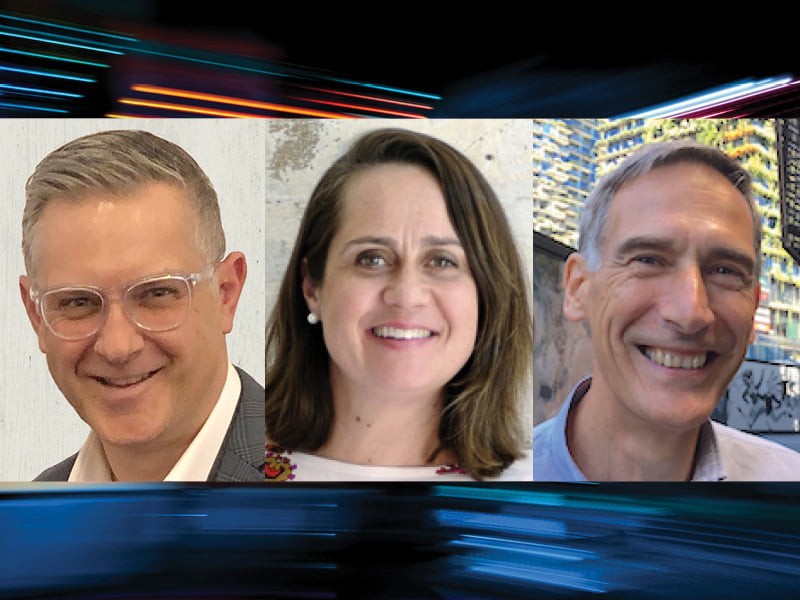The rapid expansion of IoT capability in Australia is bringing unprecedented opportunities in harnessing real-time data in everything from manufacturing to agriculture, but we need to break down data sharing barriers and beef up trust.
Speaking with InnovationAus on Verizon’s podcast series The Age of Trust – Securing Our Future, Frank Zeichner, CEO of the IoT Alliance said the COVID-19 pandemic is acting as an accelerator in breaking down data access barriers, especially in the health sector.
“COVID-19 has opened doors that were locked for a lack of impetus to move,” said Mr Zeichner.
“There are data sets that hadn’t been shared before. Suddenly, because of COVID-19, private and public hospitals started sharing information about hospital beds, which was a no brainer in terms of managing where patients go. These barriers aren’t just about awareness and cost, they are actually about old business models and old regulation preventing data sharing.”
Mr Zeichner believes that Australia should apply the lessons learned from national solidarity and practical thinking from our response to the pandemic, to the issues around infrastructure and data.
“The national view is that we managed to get out of COVID-19 through health and this also needs to happen across our key infrastructure. If we think about the hundreds of billions of dollars we will invest in infrastructure, buildings, roads and schools, we should have data embedded. We won’t have the luxury of adding that later. You don’t add the seat belt to the car later because it will cost you five times the price,” said Mr Zeichner.
Andy Lamrock, Managing Partner Global Solutions APAC at Verizon agreed saying trust is critical to creating an IoT ecosystem in Australia, especially as 5G networks roll out. “If you breach trust via privacy or confidentiality your business has gone, he said.
IoT is increasing the number of connected devices at an ever more rapid rate.
“We are going from tens of devices per square kilometre to millions of devices. Suddenly, there is a lot more data moving around, and there has to be a layer of trust,” said Mr Lamrock.

Part of the trust equation is that 5G has security baked in through the efforts of telecommunications standards body The 3rd Generation Partnership Project (3GPP).
“The benefit of 5G is that it is governed by a set of standards from 3GPP which means that security is built-in right from the very beginning. We’re moving in the right direction of a zero-trust model where machines are already authenticated and trusted in a particular environment, and therefore can only transact in that environment,” said Mr Lamrock.
Mr Zeichner likened Australia’s current IoT security environment to a place where the roads are good, but the vehicles aren’t necessarily roadworthy.
“There’s a lot of work to be done on identifying worthy devices at the edges of communications networks,” Mr Zeichner said.
He called on regulators to strengthen the IoT code of conduct.
“The federal government has devised a voluntary code of conduct for security for IoT devices. This isn’t sufficient because nobody knows who’s adhering to the voluntary code. We need something like a trust mark that marks devices as ‘Trusted’.”
Mr Zeichner also wants to see more leadership in promoting data sets that are spooling off greater use of IoT. He pointed to the US which has a national soil database that American farmers can use for free.
“As an example, we used to have a national soil database, but the Federal Government said we should let the States manage that. And then the States didn’t prioritise funding and so we end up with a situation as a country where farming is so important, but we don’t have a national soil database,” he said.
In many ways, we don’t have a holistic view of intelligent data infrastructure in Australia, said Mr Zeichner on the podcast.
“The conversation always tends to be around communications or something else. We need to focus, at a national and state level, to grease the wheels and get rid of the barriers to raise the awareness.”
Mr Lamrock believes better collaboration between regulators, technology vendors and their customers will energise Australia’s use of IoT.
“At Verizon, we have a principle of going to market around co-innovation. This approach has served us well. When we work together with an open mindset, we can accept that we don’t have all the capabilities, but together, we can work out what is needed and bring that to the table.
“If we try and solve problems in our silos, we’re going to stay in those silos. We used to have customer forums that were industry focused. Then we pulled those walls down and when we went cross industry, we accelerated learning and adoption.
“My 9-year-old daughter has the best saying: ‘Dad, we can’t solve the riddles of tomorrow unless we ask new questions.’ So that’s our job right there, is to facilitate that.”
Do you know more? Contact James Riley via Email.
